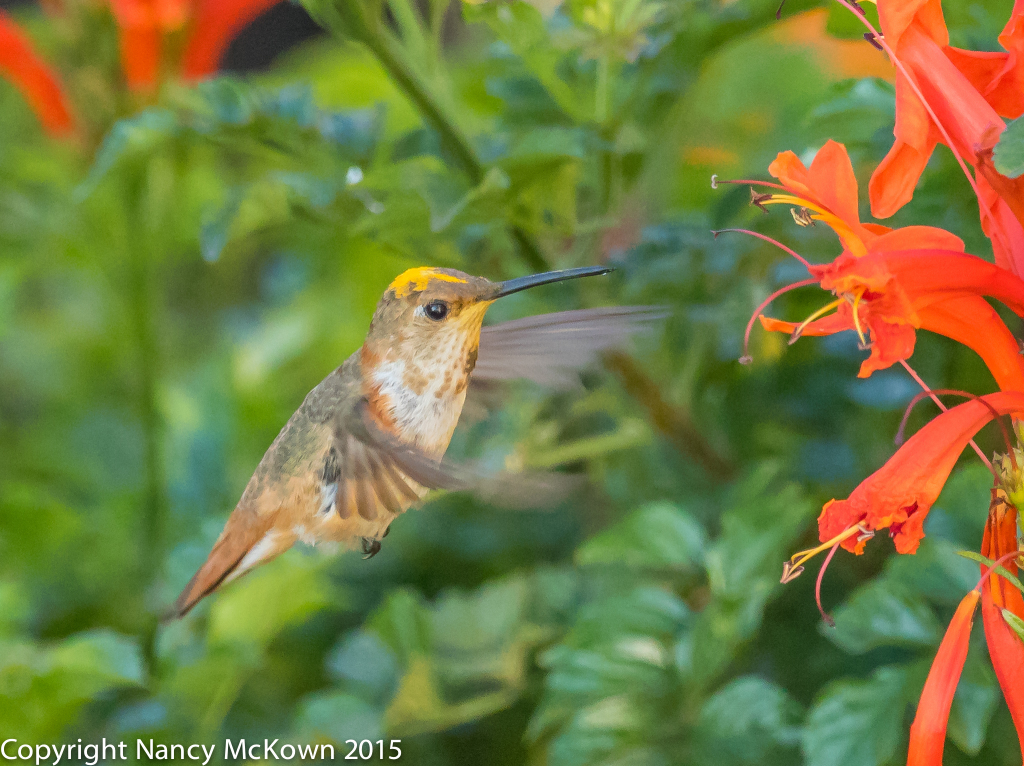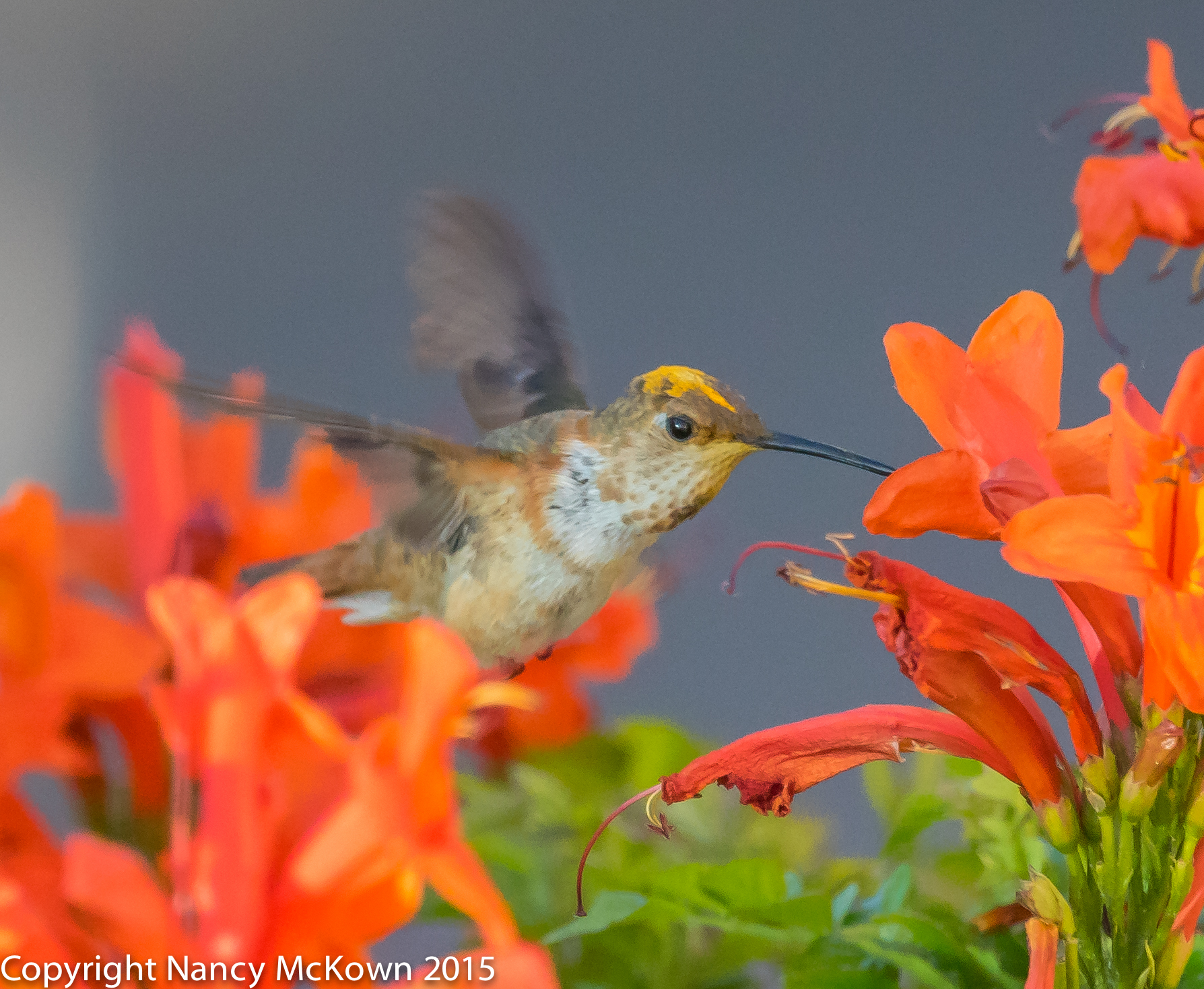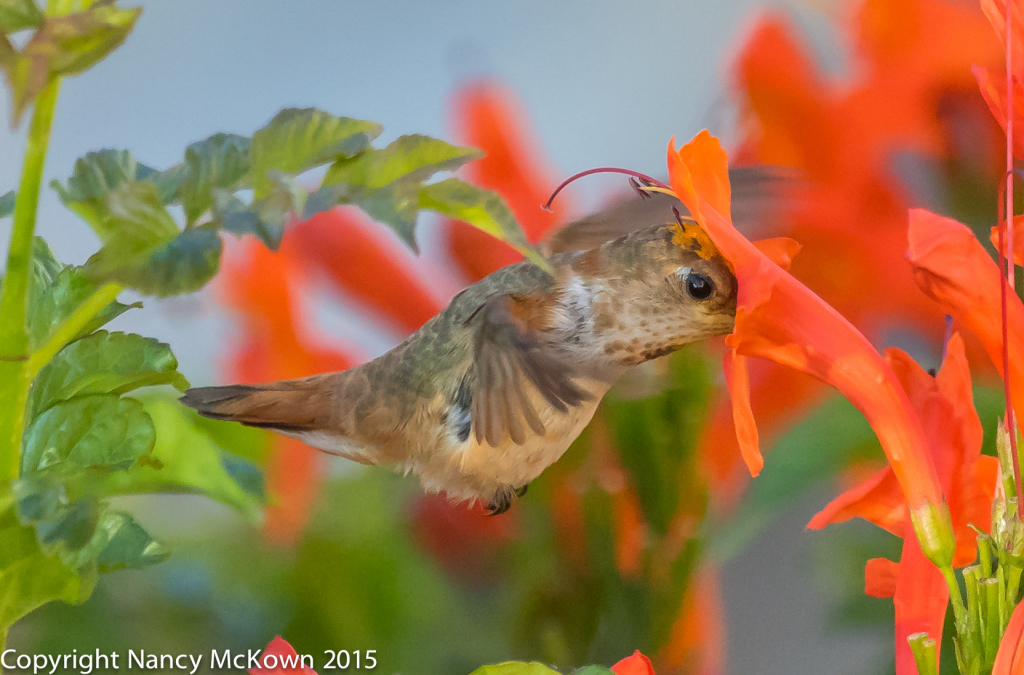Interdependence Between Hummers and their Flowers
Hummers feed constantly, mostly on a diet of sugar obtained from the nectar of bright and blooming trumpet shaped flowers. This little female Allen’s Hummer pushed her long beak deeply into the tube shaped flower (honeysuckle?) to slurp the nectar at its base. In doing so, she coated her head and neck with powdery pollen from the stamen of the flower. She will take that with her to another flower of the same species where some of that pollen will rub off onto its stigma, thereby bringing those two plants together to reproduce.

ISO2500; f/5.6; 1/1000 Second
Clear Shots Despite the High ISO
The sun was bright (like it is every single day in San Diego), but the flowers were shaded from the morning sun by tall trees. Hoping to photograph a female Allen’s hummingbird that I had seen feeding on these flowers earlier, I set up my camera and 300 mm lens on the balcony overlooking (and fairly close) to the bright orange trumpet flowers. I set the shutter as low as I dared to go to capture the fast moving hummer, and set the aperture as wide as I dare to go with a 300mm lens. (NOTE: Longer lenses, 200mm and longer, tend to give a very shallow depth of field. To learn more about long lenses and depth of field, see this post.)
With these manual settings, the auto ISO hovered between 1600 and 2500- very high. I usually don’t allow the ISO to rise above 800 or 1000, but I hoped the close proximity between the lens and the hummingbird would help lessen the impact of noise.
Happy with the Results
I think the 2 photographs above look fairly good, despite the relatively high ISO. The indirect sunlight accentuates the beauty and luminosity of the bright orange trumpet flowers and contributes to a strong composition. The hummer’s body is in focus…all except her wings. (See this post if you would like more information on motion blur.) I see that I could have blurred the background a bit more by opening the aperture up one or two additional stops. That would have done a lot to lower the high ISO. The hummer fed for 4-5 minutes, so there was plenty of time to experiment with different exposure settings. I wish I had.
Hummingbird Coated with Pollen
Not often do I photograph a hummingbird so coated with pollen. She was moving about from flower to flower so fast, I did not notice her condition until after I had the photo files downloaded to my computer.
Hummingbirds are one of nature’s most prodigious delivery systems. If you’re interested in learning more about the unique relationship between a hummingbird and its flowers, press this link.










